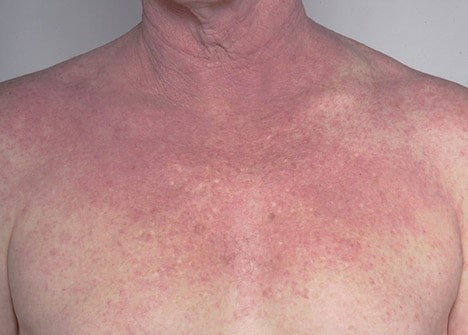Novartis is licensing the Phase II atopic dermatitis candidate MOR106 from MorphoSys and Galapagos, which partnered to create the monoclonal antibody, through a global exclusive licensing deal that could generate more than $1.1 billion for the pharma giant.
MOR106 is a fully human, IgG1 monoclonal antibody designed to target interleukin 17C (IL-17C). MOR106 is under study in the Phase II IGUANA trial (NCT03568071) assessing the candidate’s efficacy, safety, tolerability, and pharmacokinetic/pharmacodynamics (PK/PD) in atopic dermatitis. IGUANA was launched in May. Plans also call for a Phase I study designed to evaluate the safety and efficacy of a subcutaneous formulation of MOR106 in healthy volunteers and atopic dermatitis patients.
Novartis has agreed to pay for those studies. and all future research costs for MOR106—as well as all development, manufacturing, and commercialization expenses for the candidate. In return, Novartis will exclusively hold all rights for commercialization of any products resulting from the agreement signed today.
Novartis also agreed to explore the potential of MOR106 in indications other than atopic dermatitis, where MorphoSys and Galapagos plan to conduct additional trials to support the development of the candidate.
“Data from preclinical models and expression analyses suggest that the target of MOR106 might be involved in other diseases, which justifies expanding the development program,” MorphoSys CEO Simon Moroney, D.Phil., said in a joint statement by his company and Galapagos. “We are also pleased that we can further strengthen our engagement in atopic dermatitis by starting additional trials together with Galapagos, which will be fully reimbursed by Novartis. Securing a strong and committed partner for MOR106 helps the program, and also enables us to allocate more resources elsewhere.”
MOR106 was developed through a collaboration by MorphoSys and Galapagos launched in 2008. MOR106 uses Galapagos’ disease-related biology, including cellular assays and targets discovered using its target discovery platform, and has carried out clinical development of the candidate to date. MorphoSys contributed its Ylanthia antibody technology to generate fully human antibodies directed against the IL-17C target, and contributed full CMC development of the compound.
Growing Atopic Dermatitis Pipeline
MOR106 will be Novartis’ second atopic dermatitis candidate in its pipeline. The first is ZPL-389, a once-daily Phase II oral H4 receptor antagonist that Novartis acquired when it bought Ziarco Group for an undisclosed price, in a deal announced in December 2016 and completed the following month. ZPL-389 completed a Phase II efficacy study (NCT02424253) last year, and has another Phase II study planned in patients with moderate to severe atopic dermatitis, though that study (NCT03517566) had yet to recruit patients as of the trial’s most recent update posted on ClinicalTrials.gov.
Novartis said yesterday it plans to submit its first applications seeking approval of ZPL-389 in 2021.
Last year, MorphoSys and Galapagos completed a Phase I study (NCT02739009) of MOR106 in healthy volunteers as well as in atopic dermatitis patients. In September 2017, the companies reported positive Phase I results showing that at the highest dose level, 5 of 6 patients (83%) reached at least 50% an improvement in their atopic dermatitis symptoms (EASI-50) by week 4.
Under the licensing agreement, Novartis agreed to pay MorphoSys and Galapagos €95 million ($111 million) upfront; up to approximately €850 million ($1 billion) in payments tied to achieving developmental, regulatory, commercial, and sales-based milestones; plus royalties of up to low-teens to low-twenties.
The agreement is subject to clearance in the U.S. under the Hart-Scott-Rodino Act, and will become effective as soon as that condition has been met.
“We are a leader in immuno-dermatology and committed to reimagining the care of patients with severe diseases such as psoriasis, chronic spontaneous urticaria, and atopic dermatitis,” Eric Hughes, Novartis’ global development unit head, immunology, hepatology and dermatology, said in a company statement. “We are pleased to work with Galapagos and MorphoSys who have a proven track record of developing drug candidates for severe inflammatory diseases.”


